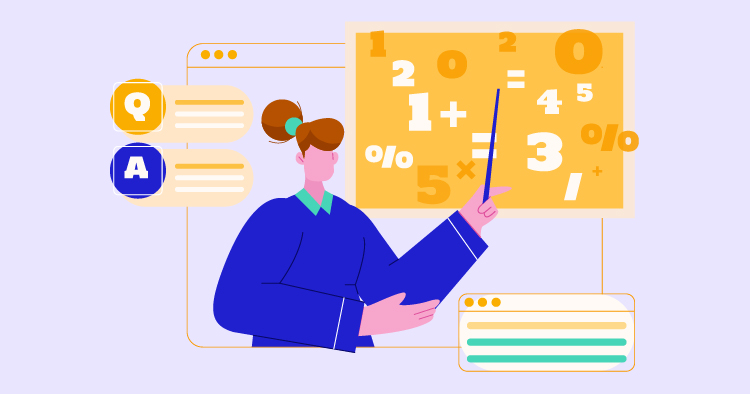Web development has become a cornerstone of modern education. It’s fascinating how it has transformed traditional classrooms into interactive, digital learning environments. Today, teachers and schools are eager to capture students’ attention and help them learn more engagingly. That’s where web development comes in. It’s all about using new tech and intelligent design to build websites that aren’t just informative and fun. These sites let students and teachers work together and access many resources anytime. This article will delve into why web development is so crucial for creating educational experiences that are both effective and enjoyable.
Understanding the Needs of Modern Education
Modern education is changing rapidly, with more people looking for ways to learn online. This trend is a big deal for small businesses in education because it means they have to find new ways to teach and connect with students. Even though they don’t have as many resources as more prominent companies, small businesses can significantly impact the market by creating great online learning platforms.
Small businesses have to think competent to compete. They need to use what they have to make learning platforms as good as those from more prominent companies. This is where web development comes in. By building a solid online presence, small businesses can offer high-quality education to more people.
The Role of Web Development in Education
Web development is super important for making online learning engaging and effective. It’s all about creating websites that aren’t just packed with information but are also easy to use and interactive. This helps learners stay interested and get the most out of their education.
For small businesses, creating a custom website for education has many perks. It means they can create a learning experience for their students and their educational goals. With custom web development, they can add unique features that make learning more accessible and more fun.
In short, web development lets small businesses in education do amazing things. They can build platforms that teach and inspire learners to keep growing. It’s a powerful tool that can help them stand out and make a real difference in the world of education.
Identifying Target Audience and Their Needs
When small businesses in the education sector think about their customers, they need to understand who they are teaching and what these learners want to get from their educational experience. This means looking at what students prefer when learning, the problems they encounter, and what they hope to achieve. It’s like putting together a puzzle where the pieces are the student’s needs and preferences, and the complete picture is the perfect learning platform for them.
It’s essential to ensure students can easily access the content, find courses relevant to their lives or careers, and interact with teachers and other students without hassle. By figuring out these key points, businesses can create learning experiences that hit the mark and help students learn better and more effectively.
Select one of over 500 designs and establish your online presence.
- Free Web Hosting
- Fully Managed Solutions
- Scalable Websites
- No Hidden Cost
Designing User-Friendly Learning Platforms
When making educational websites, the goal is to focus on the learner. The goal is to create a good-looking site that is easy to navigate and smooth for the learning process. It’s like making a welcoming space that invites students to come in and stay a while.
A website that’s easy to use looks good on phones, tablets, and computers and helps guide students along their learning path, which is what you aim for. This kind of thoughtful design means students can jump into their lessons whenever and wherever they want, which can make a big difference in their ability to keep learning, no matter how busy.
Content Creation for Engaging Learning Experiences
It is crucial to create content that captures learners’ interest. This means crafting lessons that are informative, interactive, and fun. Consider using quizzes, videos, and infographics to bring topics to life. These tools can transform a standard lesson into an adventure that learners look forward to.
Adding elements like games and multimedia can make a big difference. They help keep learners motivated and can even make the information stick better. When people enjoy what they’re doing, they’re more likely to remember it and return for more.
Implementing Effective Communication Channels
It’s also important to consider how learners can talk to each other and their instructors. You can create a space where learners can ask questions and share ideas by weaving in ways for everyone to connect, like chatbots, forums, and messaging. This doesn’t just help with learning; it also helps people feel like they’re part of a group.
For small businesses, these communication tools are a game-changer. They help create a learning environment that feels personal and direct. When learners can easily reach out and interact, they’re more engaged, and the learning feels more relevant to their needs.
Optimizing for Search Engines and Organic Rankings
Search engine optimization, or SEO, is essential for educational websites. It’s all about ensuring your site appears in the search results when potential students or teachers look online for resources. The higher your site appears in these results, the more likely people will visit it. This can lead to more sign-ups and more engagement with your content.
To improve organic rankings, start with keyword research. Find out what words and phrases your audience is searching for, and then use those terms in your website’s content. But it’s not just about keywords; your website should also be easy to navigate. Creating high-quality educational materials and getting other respected websites to link to your content can also help your site’s credibility and search ranking.
Leveraging Analytics and Data for Continuous Improvement
Using analytics is like having a roadmap to improve your educational website. By looking at the data, you can see how users behave on your site, which parts they find most interesting, and where there might be room for improvement.
Select one of over 500 designs and establish your online presence.
- Free Web Hosting
- Fully Managed Solutions
- Scalable Websites
- No Hidden Cost
This data is precious because it helps you choose what to change or add to your site. For example, you might discover that users love video tutorials but don’t engage with text-based content as much. With this insight, you can focus on adding more videos to enhance their learning experience. Monitoring analytics means your site can keep getting better and better, always fitting the needs of your users.
Integrating Social Media and Collaborative Tools
Social media integration within learning platforms can be a game-changer for students and educators. A learning platform can gain more attention and potentially attract new users by allowing users to share their successes and insights. Think of it as digital word-of-mouth; when learners post about a course they’re excited about, their friends and followers might get curious and check it out themselves.
But it’s not just about marketing. Social media can also create a sense of community. Learners are more likely to stay motivated and engaged when they connect and support each other online. It’s like having a study group always available.
Beyond social media, collaborative tools play a huge role in enhancing the learning experience. Imagine a digital space where students can collaborate on projects, discuss ideas in forums, or get instant feedback through chat rooms. These interactions can make learning feel more like a team sport than a solo race.
Ensuring Security and Privacy in Educational Platforms
Keeping user data safe is a top priority for educational websites. Students and teachers constantly upload assignments, grades, and personal information. You must keep this data under lock and key to prevent unauthorized snooping or theft.
One of the best ways to safeguard information is by using secure connections. This means that secure connections encrypt any data sent between the user’s device and the platform, making it much harder for hackers to intercept. It’s like sending a letter in a locked safe rather than a transparent envelope.
Regular software updates are also crucial. These updates often fix security holes that cybercriminals could exploit.
Lastly, privacy laws and regulations must be followed. These rules protect users, and adhering to them can help a platform earn their trust. It’s like a restaurant following health codes—it reassures customers they’re in expert hands.
Educating users about safe online behavior is the last piece of the puzzle. The platform becomes more secure when everyone can protect their personal information. It’s a team effort to keep the digital learning environment safe and secure for everyone.
Final Thoughts
The impact of web development on education is truly remarkable. Well-crafted educational websites can completely change the learning game. They make it easier for students to grasp concepts and engage with their lessons. And as tech keeps getting better, there’s always something new on the horizon that could revolutionize learning even more. That’s why it’s essential for the people who build these websites, the teachers who use them, and the schools that support them to keep working together. By doing so, they can find new ways to make education through web development even more impressive.



